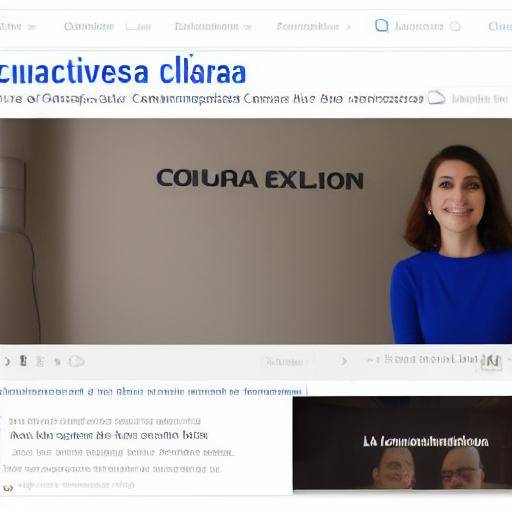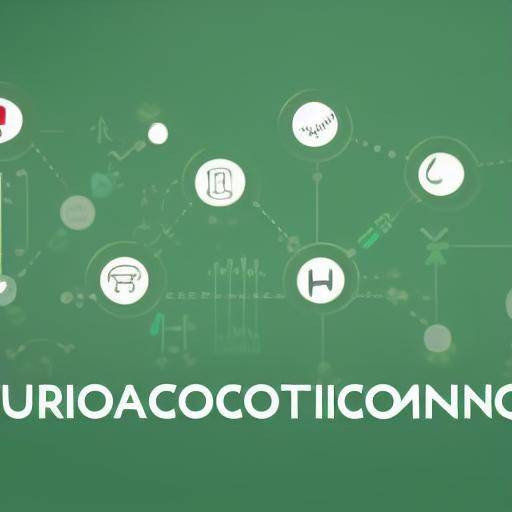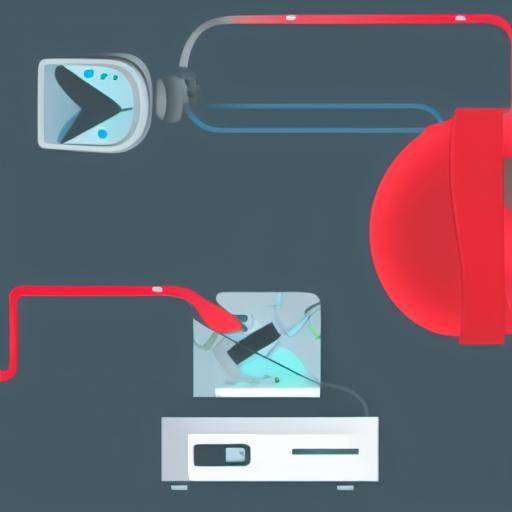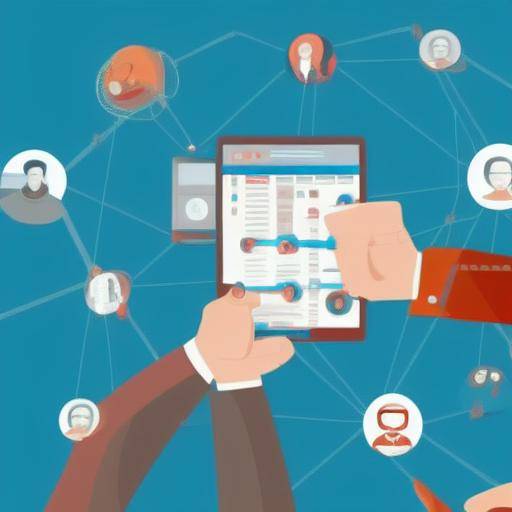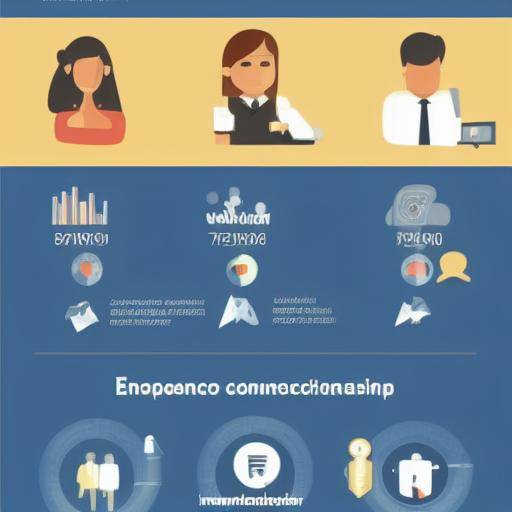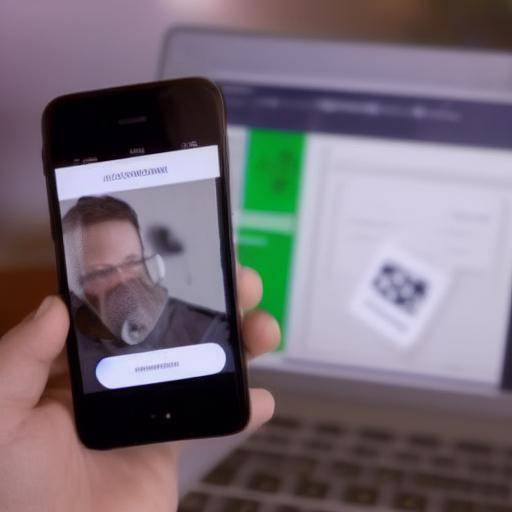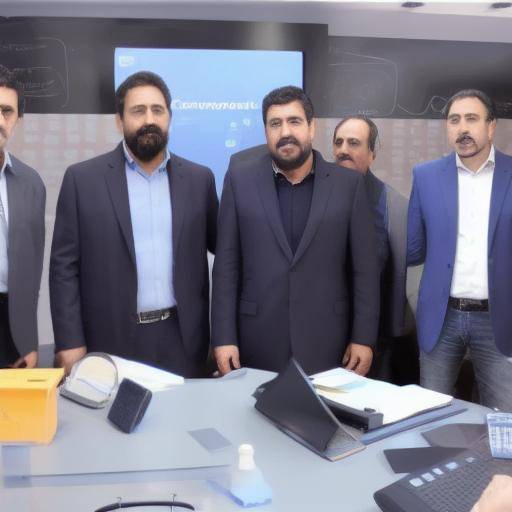
In a working environment, teamwork is fundamental to the success of any company. Effective communication plays a crucial role in collaboration between team members. However, how does active listening relate to teamwork? In this article, we will explore in depth the impact of active listening on teamwork, analyzing its importance, benefits, challenges and offering practical advice. If you are interested in maximizing the potential of your work team, read on how active listening implementation can positively influence collaboration and overall performance.
Introduction
The importance of teamwork
Teamwork is essential in all areas of work. Employees ' ability to collaborate, communicate effectively and contribute together towards common objectives is critical to business success. However, effective collaboration goes beyond simply working together; it involves understanding, supporting and respecting the ideas and contributions of others. This is where active listening plays a crucial role.
What is active listening?
Active listening goes beyond simply hearing what is said. It implies giving full attention to the person who speaks, understanding the message objectively and responding appropriately. In a working environment, active listening allows team members to understand the needs, concerns and views of their colleagues, thus facilitating more effective communication and stronger collaboration.
In the next sections, we will deepen the relationship between active listening and teamwork, exploring their impact, challenges, practical advice and future trends.
History and Background
Origins and Evolution
The importance of active listening in teamwork has deep historical roots. From the old collaborative strategies in tribal societies to modern approaches to participatory leadership, the need to understand and communicate effectively has been a central theme in the evolution of working environments.
Active listening in the modern business world
With the advent of organizational psychology and human behavior studies, the importance of active listening in teamwork has become a central consideration in human resource management and organizational dynamics. Employee-centred approaches and collaborative leadership have expanded the scope of active listening as a key tool for maximizing the potential of the team.
Deep analysis
Benefits of active listening in teamwork
Effective implementation of active listening entails a series of concrete benefits for teamwork. Some of these benefits include:
- Building an atmosphere of trust and openness.
- Improved problem resolution and decision-making.
- Increased empathy and mutual understanding.
- Increased motivation and commitment of team members.
- Reduction of misunderstandings and interpersonal conflicts.
Challenges and Challenges
Despite the obvious benefits, successful implementation of active listening in teamwork also presents challenges. Some of the common obstacles include:
- Distractions and lack of concentration.
- Preconceived prejudices or trials.
- Resistance to change and adoption of new practices.
- Unbalances in the participation and distribution of speech time.
- Misinterpretations and failures in non-verbal communication.
Addressing these challenges is crucial to ensuring that active listening becomes an entrenched and effective practice in a working environment.
Current trends
In the digital era, teamwork dynamics and active listening are influenced by communication technologies. The transition to virtual environments, the increase in remote work and the cultural and geographical diversity of the work teams have led to new trends in the implementation of active listening. The adaptation of communication tools, the promotion of inclusion and diversity, and the development of new interaction strategies are aspects in which organizations are focusing their efforts.
Comprehensive review
Practices and Best Practices
Various strategies can promote active listening and optimize their impact on teamwork. Some of these practices include:
- Promote open and constructive feedback meetings.
- Implement active listening skills development programs.
- Establish clear and direct communication standards.
- Promote diversity and inclusion to enrich mutual understanding.
- Increase bidirectional feedback among team members.
Perspectives of Experts and Industry Indications
According to experts in human resources management and team dynamics, active listening is a crucial component in creating healthy and productive working environments. Promoting empathy, understanding and equitable participation reinforces team cohesion and performance.
In a constantly evolving business world, active listening capabilities and effective collaboration are increasingly seen as key to adaptation to changing environments and the momentum of innovation.
Comparative analysis
Comparison between Teamwork, Active Listening and Collaboration
While teamwork, active listening and collaboration are closely interlinked, each brings different aspects to the work dynamic:
- Teamwork focuses on cooperation and effective coordination among team members to achieve common objectives.
- Active listening enhances communication and mutual understanding within the team, promoting an environment of trust and understanding.
- Collaboration goes beyond coordination, fostering synergy and integrating different perspectives and skills to generate results beyond the sum of the parties.
Practical Tips and Accessible Recommendations
Keys for an Effective Active Listen
To encourage active listening in teamwork, it is essential to take into account some practical tips:
- Practice empathy and understanding before responding.
- Avoid interrupting the interlocutor and showing genuine interest in their views.
- Use body language to show attention and show clear and affirmative verbal responses.
- Reflect on the messages received and ask questions to clarify any ambiguity.
Conclusions
Active listening in teamwork is much more than skill; it is a catalyst for innovation, team cohesion and job satisfaction. By promoting mutual understanding, trust and empathy, active listening not only improves the team's dynamics, but also has a positive impact on the company's final results.
Frequently asked questions
How can I encourage active listening on a work team?
Promoting active listening in a working team involves promoting a culture of mutual respect and openness. Specific training sessions, clear communication standards and opportunities for team members to share their perspectives freely can be organized.
What role does active listening play in conflict resolution within a team?
Active listening is fundamental in conflict resolution, as it allows team members to understand the concerns and views of others. By fostering empathy and mutual understanding, active listening pave the way for collaborative and durable solutions.
How can I evaluate the effectiveness of active listening on my team?
The effectiveness of active listening in a team can be assessed by observing the quality of communication, the emergence of misunderstandings, the equal participation of team members and the ability to resolve conflicts constructively.
What are the most common barriers to the implementation of active listening in a working environment?
Common barriers include lack of time devoted to active listening, the presence of prejudices or stereotypes, and resistance to the adoption of new communication practices.
What impact does active listening have on employee motivation?
Active listening increases employee motivation by demonstrating genuine interest in their ideas and perspectives. This reinforces the feeling of assessment and contribution to the team, which in turn promotes greater commitment and dedication.
What are the long-term benefits of promoting active listening in a working environment?
Long-term benefits include greater cohesion and collaboration among team members, a culture of innovation and effective problem solving, and a general improvement in the working climate and employee satisfaction.
In short, active listening is a key element in the development of sound and efficient work teams. In fostering mutual understanding, open communication and respect, a working environment is created that promotes effective collaboration and success in achieving common goals.











